10 February 2021
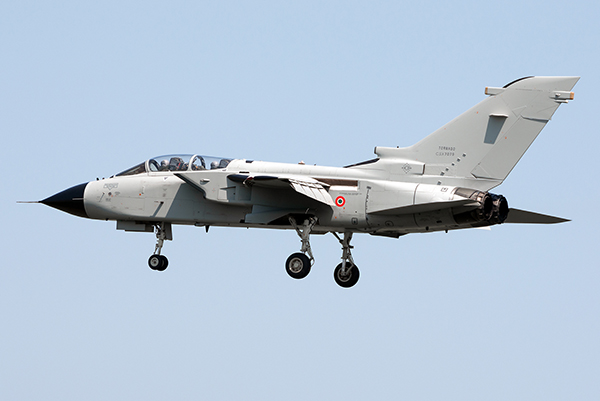
The prototype of the Tornado ECR, still used by Leonardo in development work
In the late 1960s, three nations joined their technical and managerial forces in a partnership of unprecedented scope. The three biggest names in the aerospace industry in Great Britain, Germany and Italy – the British Aircraft Corporation (now BAE Systems), FIAT Aviazione (which went on to become Aeritalia, then Alenia Aermacchi, and is now Leonardo), and MBB (now Airbus DS) – joined forces in the project. The partnership established the Panavia consortium and laid the foundations for the birth of a true European aeronautical industry, which went on to establish the Eurofighter programme.
The years of work that went into developing the Tornado marked a major advancement of technology in the Italian aerospace industry: a bi-sonic airplane with variable wing geometry representing a real triumph of technology. The aircraft was initially produced in the IDS (InterDiction and Strike) version, but within a few years its potential was confirmed by development of other configurations: first the ADV (Air Defence Version), followed by the ECR (Electronic Combat Reconnaissance) version, the primary task of which is localisation and suppression of enemy radar sources with anti-radiation missiles.
In developing the latter version, one aircraft, the IS78 (Italian Strike nr. 78), was used by the company (that was then known as Alenia) as a prototype for producing the ECR version starting in 1989. This Tornado has always been based in the Turin-Caselle plant for development tests and subsequent tests for integration of the modifications that have been made to the Tornado over the past 30 years.
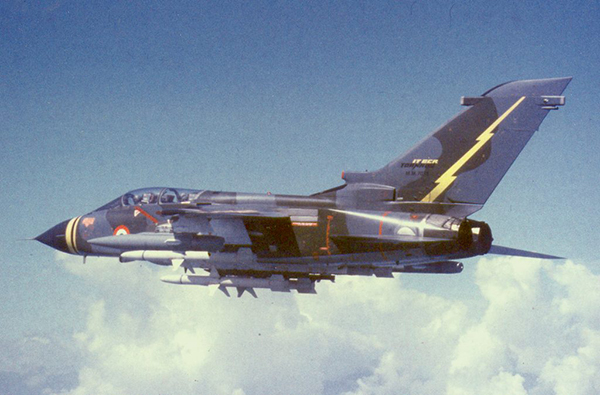
The prototype of the Tornado ECR, IS78, on one of its first test flights
The programme for converting Italian Tornado aircraft into a version for electronic/reconnaissance warfare began in 1992, with modification of 16 aircraft in the IDS configuration. Transformation of existing airframes was made possible by the fact that the Tornado had already been demonstrated to be a robust, reliable machine, reducing the need for reserve aircraft out of the total of 99 purchased by the Air Force (excluding prototypes).
This permitted significant cost-savings compared to purchasing additional new aircraft (the option chosen by Germany). Over the years, like the IDS, the Italian Air Force’s ECR aircraft were also modernised repeatedly, particularly in the latest instance (RET8) of the Mid-Life Update programme. 25 Tornado aircraft (10 IDS and 15 ECR) were upgraded to this advanced standard, introducing new avionics systems and increasing the number and type of armaments and mission loads usable, allowing the aircraft to accomplish their assigned missions with increasing efficacy. In the specific case of the ECR, the 15 Tornados belonging to the 155th ETS “Pantere/Panthers” Squadron were upgraded between 2013 and 2018.
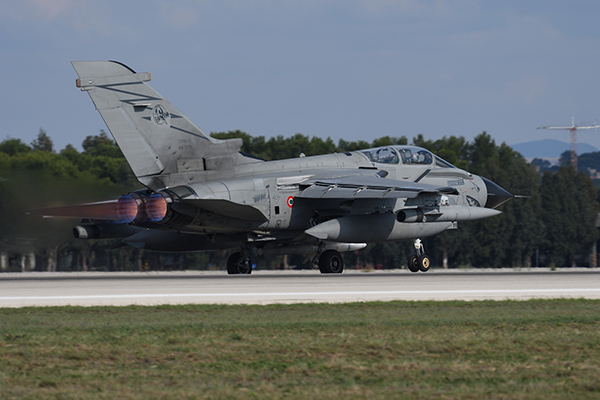
A Tornado ECR belonging to the 155th ETS Squadron taking off on a training mission
RET8 involved several sub-systems and functions, and required changes to on-board systems, to the armament management system with installation of new wiring at all hard points (except for the 2 outermost), and new mission software. Following this upgrade, the INS/GPS integrated navigation system is now aided by a Multi-Mode Receiver (MMR) system including two approach and landing instrument systems, MLS (Microwave Landing System) and ILS (Instrumented Landing System). The IFF communication and identification system has been upgraded to the latest standards, including secure communication capability and introducing data transmission and reception via Data-Link (MIDS).
The pilot and navigator’s cockpits have been equipped with new multi-functional displays, improving the man-machine interface and reducing their workload. The internal and external lighting systems have been made compatible with night vision devices. Electronic reconnaissance capability, which is the aircraft’s purpose, has been improved with the introduction of new Multi Ship Ranging functions for cooperative threat recognition. Under the Major Engineering Task (MET) 27 programme, in which Alenia Aermacchi led a team including BAE Systems and Cassidian (now Airbus DS), AGM-88B HARM antiradar missiles and the brand-new, more advanced AGM-88E AARGM were integrated; the Italian Air Force thus became the second NATO air force to acquire this prestigious capability, after the US Navy. At the same time, the Tornado’s arsenal was expanded with the addition of GPS-guided GBU-32 JDAM bombs, laser-guided GBU-16, GBU-24 and EGBU-24 bombs, Stormshadow stand-off armaments and GBU-39B SDB (Small Diameter Bomb) glide bombs.
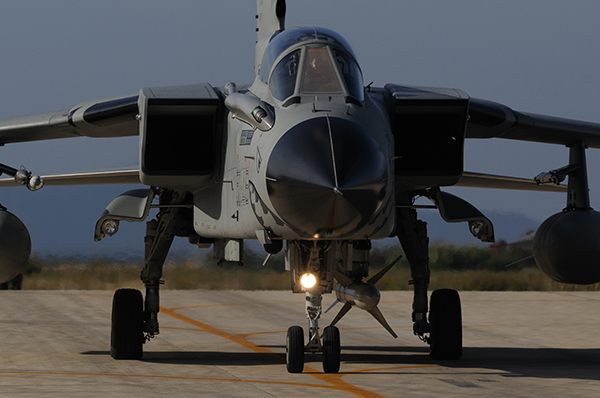
A Tornado ECR AM with an AGM-88B antiradar missile
Another equally important development was the addition of new external pods, starting with the CLDP (Convertible Laser Designation Pod) for target acquisition; the RecceLite for reconnaissance; and the BOZ102EC protective device (chaff and flare dispenser).
Leonardo made an essential contribution to all this technological upgrading. In addition to the IS78 prototype mentioned, from the early 1980s, three more production aircraft (IS84, IS47 and IT04, in which the letters IT identify the dual-command version for pilot training, which maintains the same operative features) were assigned and equipped with instruments for development of the subsequent modifications and upgrades of the Tornado listed above.
The time that saw the most intense use of the production aircraft converted into development aircraft was the MLU programme, culminating in 2009 with three aircraft (IS47, IS78 and IT04, in the IDS, ECR and Trainer configuration, respectively) conducting about 100 test flights for verification of the MLU modifications in an extended campaign directed by Flight Tests, using both the Caselle base and the one in Decimomannu, Sardinia. A number of test flights also used Cuneo-Levaldigi airport. But, to return to the IS78, the aircraft has recently been transferred from Turin to the Italian Air Force’s Experimental Flight Department (RSV, for Reparto Sperimentale di Volo), where it will be used by the Air Force itself until May 2021 for new integration tests at Pratica di Mare, after which it will return to Leonardo’s Aircraft Division in Caselle (Turin) to support the development of new capabilities, for which a new development aircraft is currently being set up (the IS43) on the basis of this past wide experience.
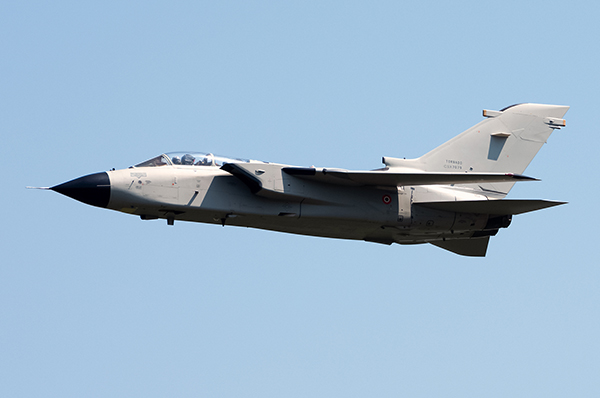
Another view of the prototype of the Tornado ECR, IT78, during a test flight
The Italian Air Force’s Tornado ECR aircraft are just as heavily used as their interdiction counterparts, if not more, participating in all the most important military operations of recent decades. Thanks to the Tornado ECR, the Italian Air Force and the German Luftwaffe (which has 20 ECRs) are currently the only NATO air forces, other than the US Air Force, to fly aircraft specialising in suppression of enemy air defences (SEAD) missions. The ECRs are scheduled to remain in service in both air forces until at least 2025.
Photos by Alessandro Maggia and Luca La Cavera

